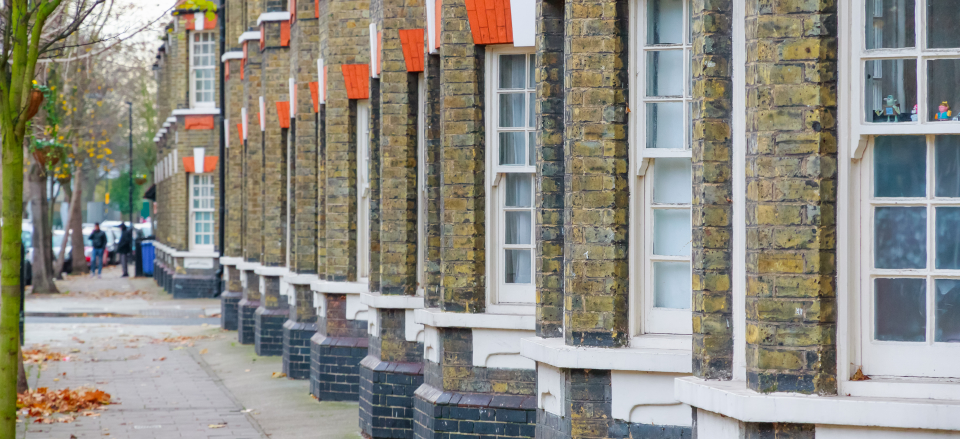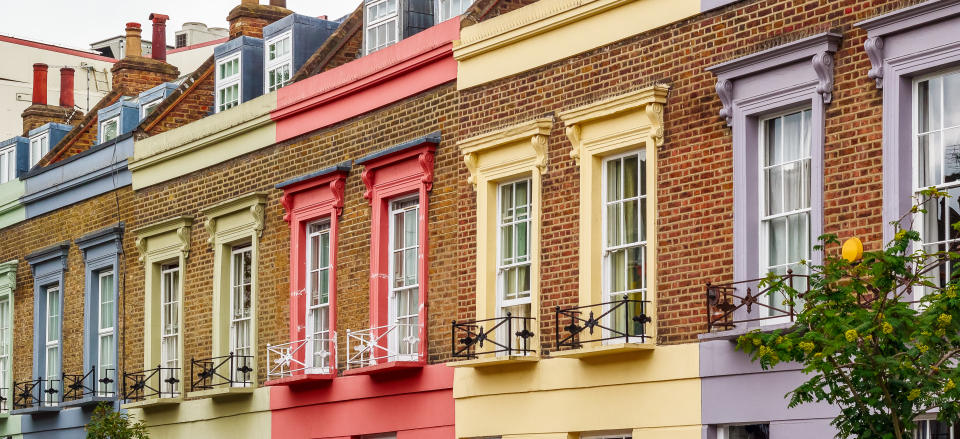UK rents drop 0.8% in last three months
But a two-speed rental market is emerging, according to our quarterly Rental Market Report.
Average UK rents fell by 0.8% between April and June, according to our quarterly Rental Market Report.
This takes the annual growth rate in rents to 1.1%, down from 1.7% a year ago.
However, a two-speed market is emerging, with rental growth actually up across regions outside of London.
Where are rents rising and falling?
The two-speed rental market is being driven by diverging trends in supply and demand between London and the rest of the UK.
Annual rental growth – excluding London – is up 2.2% as demand continues to outstrip supply in many markets. It ranges from 1.5% in the West Midlands, through to 3.1% in Wales.
Only six of the 64 towns and cities tracked by the rental index have shown rental falls in the past year (Swindon, Coventry, Middlesbrough, Northampton, London and Aberdeen), with a further six registering growth over 4% (Rochdale, Sunderland, Bristol, Preston, York, Leicester).
But a rise in the number of homes for rent in London and Edinburgh, which is increasing choice for renters, is not being matched by similar levels of demand. And this is leading to downward pressure on rents and the rate of rental growth in these two cities.
London
Increasing supply and weaker demand in the capital have meant that rents have fallen 3% since the start of the year, and they have dropped 1.4% over the last 12 months.
The greatest downward pressure on rents has been seen in the heart of London, where the working from home policy and a clampdown in travel and tourism during lockdown have hit demand for rental property.
This is the second time rents have gone into negative territory in London in the last three years. In March 2017, rents were down 2.8% on the year after the 3% stamp duty surcharge was introduced in 2016.
Edinburgh
Meanwhile, annual rental growth in Edinburgh, the second most popular tourist destination in the UK, has slowed to 0.2%, down from 4% a year ago, as declining tourism and policy changes take their toll on landlords and the supply of homes for rent.
What is rental demand like?
Overall demand for rental homes is running 33% higher than pre-lockdown levels, and 25% above 2019 levels across the UK.
It’s likely to have been driven by pent-up demand from renters whose plans were put on hold during the housing market shutdown, plus other renters who may have used lockdown to reassess their home and lifestyle.
At the same time, the number of homes for rent has climbed since lockdown ended. It is now slightly ahead of seasonal trends, with the volume of homes for rent across the UK up 7% on this time last year.
How affordable is renting at the moment?
Affordability has remained largely unchanged in recent years, except for in London, where the proportion of income needed to cover average monthly rents has fallen to 45% from 54% in September 2014.
Perhaps unsurprisingly, the capital remains the most expensive region in the UK in which to rent a home.
What can we expect for the rest of 2020?
Zoopla Research expects annual UK rental growth outside London to halve from 2.2% to 1% by the end of the year, with an annual decline in London of up to 5% by the end of 2020.
Head of research, explained: “The future path of annual rental growth will be determined largely by the economic outlook, especially the rise in unemployment and the future path of average earnings.
"However, as new rental supply continues to catch up with demand levels, we could see further softening of headline rental growth by the end of the year, although there will be some areas of outperformance.
“Uncertainty continues over how any further outbreaks of COVID will impact the resumption of office life, student life and tourism, and this uncertainty will impact demand in some markets during the rest of the year.”
Help to Buy equity loan scheme extended
The government has pushed back the qualification deadline to help buyers whose new homes have been delayed by coronavirus.
The government has extended the deadline for the Help to Buy initiative by two months.
Under the current scheme, which enables people to buy a new-build home, builders need to have finished construction by the end of December in order for buyers to qualify for the equity loan.
This deadline has now been extended until 28 February 2021, with the deadline for legal completion remaining unchanged at 31 March 2021.
The Help to Buy equity loan scheme enables people to purchase a new-build home with just a 5% deposit, with the government topping this up with a 20% loan that is interest-free for five years.
Housing minister Christopher Pincher said: “Today’s announcement will help provide certainty and assurance for Help to Buy customers whose new homes have been delayed due to coronavirus.”
Why is this happening?
The current version of the Help to Buy equity loan is due to be replaced by a new version of the scheme on 1 April 2021.
The changes, which include limiting it to first-time buyers, have been flagged up well in advance.
But thousands of families who had planned to use the scheme are understood to be at risk of not qualifying, as the home they were planning to buy may not be built in time due to the coronavirus pandemic.
The extension of the deadline should enable them to still use the scheme.
Who does it affect?
The Help to Buy equity loan scheme has helped 272,852 people buy their first home or trade up the property ladder since it was first launched in April 2013.
It has, however, been criticised for helping people on high incomes buy expensive homes.
The new version of the scheme will address these criticisms, limiting the initiative to first-time buyers only and imposing property price caps on the maximum value of homes that can be purchased through the scheme in different regions.
What’s the background?
The Help to Buy equity loan scheme is one of a number of initiatives to help people get onto the property ladder.
Other schemes include the Lifetime ISA, under which the government contributes up to £1,000 a year to savers aged under 40 who set aside £4,000 annually towards the purchase of a new home or retirement.
The First Homes scheme enables first-time buyers and key workers in England to buy a new-build home at a 30% discount.
First-time buyers have also benefited from a stamp duty exemption on homes costing up to £300,000, although the Chancellor recently announced a stamp duty holiday for all buyers on homes costing up to £500,000 until 31 March 2021.
Top three takeaways
- The government has extended the deadline for the Help to Buy initiative by two months
- Under the current scheme, homes would need to have finished being built by the end of December in order for buyers to qualify for the equity loan
- This deadline has now been extended until 28 February 2021, with the deadline for legal completion remaining unchanged at 31 March 2021
Q&A: what’s happening in the property market?
We catch up with Richard Donnell, director of research and insight at Zoopla, about the trends he has seen since the housing market reopened for business.
Q. Richard, it’s been more than two months since the housing market reopened in England. What trends are you seeing now?
A. We are still seeing demand that built up during lockdown coming back to the market in England - and this is showing up in sales figures, with the number of sales agreed now running significantly higher than early March.
There are also strong indications that some households used lockdown as a chance to reassess how, and where, they live. These people are now entering the housing market, listing their home for sale and looking for their next home.
Q. What about Scotland, Wales and Northern Ireland?
A. As these markets have opened up over the last month or so, we have seen similar trends emerge, with demand rising and sales starting to climb too.
Q. So activity in the market is back to ‘normal’?
A. Sales numbers have certainly bounced back, but to put this in context, the number of sales agreed between January and July this year are still 20% lower than the same period in 2019.
As a result, we expect overall transaction levels to be around 15% lower this year as a whole - a significant fall, but a much more modest decline than many were expecting back at the start of lockdown in March.
Q. What does this mean for prices?
A. The higher levels of activity in the market are a hallmark of the rise in demand we have seen as markets have opened up. But we are seeing very clearly that this demand is not being matched by supply across the UK.
What I mean by that is that the number of households deciding to put their home on the market is currently far outnumbered by the number of households hoping to buy.
This imbalance between demand and supply is actually putting upward pressure on prices at the moment, and as a result we have seen the headline rate of price growth for UK homes rise to 2.7% in June, up from 2.4% in May.
Q. Are all the regions seeing this trend too?
A. Broadly that is right, yes. But when we dig into our index and additional data at a more granular level, some differences emerge. For example, in some city markets the imbalance between demand and supply is varied, as shown in the chart below.
It is no coincidence that the cities to the right of this chart, including Sheffield, Liverpool and Manchester, where demand is outstripping supply the most, are the places where house price growth is currently the strongest.
Q. The demand in many cities seems strong from this data, but we are hearing a lot about people moving to more rural areas?
A. We have seen increased demand in areas adjacent to cities. There are some buyers who are considering such a move, especially if their commuting patterns are set to change and they don’t have to travel to the office every day.
However, we believe that this is a ‘one-off’ factor rather than a seismic shift. We can see that in many city markets the largest demand is for properties within the city limits, and as markets start to reopen, there will be some rebalancing back towards higher density areas within cities.
Q. What impact has the stamp duty announcement had?
A. As we examined in our stamp duty research earlier in the year, London and the South East were always set to benefit the most from any stamp duty holiday. That's because higher average prices mean that buyers in these regions can make the biggest savings.
Our data is showing that this is the case, with a notable 27% jump in demand from purchasers in the weeks since the announcement earlier this month.
Q. What’s the outlook for the rest of this year?
- We expect the annual rate of pricing to remain within the 2-3% band well into the fourth quarter, October to December, as the current demand in the market supports pricing.
The economic landscape, especially unemployment levels, will impact how pricing evolves into 2021.



